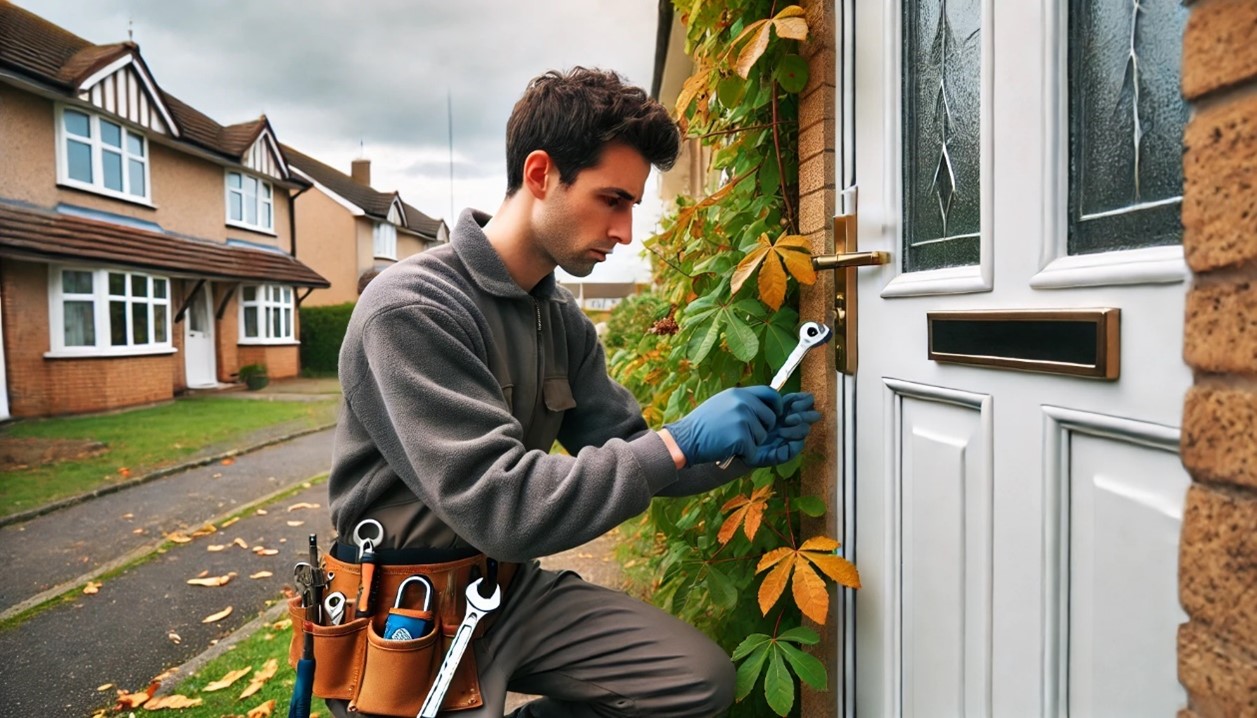Preparing Your Home Locks for Each Season: Maintenance Tips 🌸☀️🍂❄️
Lock performance can be affected by fluctuating temperatures, humidity, and weather conditions. Whether pollen in spring, scorching summer heat, fall storms, or freezing winter nights, your locks deserve attention to keep them turning smoothly and securely. These home lock maintenance tips will guide you through seasonal checklists—plus year-round best practices—so you can avoid sticky keys, warped mechanisms, or frozen cylinders. Let’s dive into the seasonal maintenance routine every homeowner needs! 🔑✨
Spring Lock Cleaning: Remove Debris and Lubricate 🧼🌱
As flowers bloom and pollen fills the air, tiny particles can work their way into your lock cylinders and keyways. Follow these actionable tips to keep springtime grime at bay:
-
Blow Out Debris with Compressed Air
-
Insert a straw attachment into the keyway and give short bursts of compressed air to dislodge dust, pollen, and small debris.
-
Why it matters: Clearing out hidden particles prevents jamming and undue wear on internal pins.
-
-
Apply a Dry Graphite or Teflon-Based Lubricant
-
Spray a small amount of dry graphite or Teflon-based lock lube into the keyway. Insert and remove the key several times to distribute the lubricant evenly.
-
Why it matters: Lubrication reduces friction, ensuring smooth key turns and preventing rust from spring showers.
-
-
Wipe Down Exterior Hardware
-
Use a soft, damp cloth to clean knobs, levers, deadbolts, and strike plates. Remove pollen and plant sap that can cause sticky residue.
-
Why it matters: Clean surfaces prevent corrosion and keep your lock looking its best.
-
-
Inspect Weatherstripping Around Doors
-
Check for torn or missing weather seals; replace if necessary. Good seals keep moisture and allergens out of your locks.
-
Why it matters: Proper weatherstripping reduces humidity entering the lock cylinder, preventing internal corrosion.
-
Tip: If your front door is exposed to blossoming trees or flowerbeds, consider installing a drip cap above the jamb to divert rainwater and melting pollen runoff. 🌧️🚫
Summer Heat: Preventing Lock Warping ☀️🔥
High temperatures and intense sunlight can cause metal expansion, leading to misaligned strikes and sticky deadbolts. Use these home lock maintenance tips to shield your locks from summer’s worst effects:
-
Check Alignment of Deadbolts and Strikes
-
With the door closed, insert the key and turn the deadbolt. If it feels tight or grinds against the strike plate, use a wood chisel to adjust the strike or install a larger jamb reinforcement plate.
-
Why it matters: Metal expansion during heat waves can shift alignment, making it hard to lock or unlock door.
-
-
Shield Locks from Direct Sunlight
-
Install a sunshade or awning above outward-facing doors. Use UV-protective film on sidelights to reduce heat transfer.
-
Why it matters: Prolonged sun exposure can fade finishes and warp components, especially on vinyl or hollow-core doors.
-
-
Lubricate with a Silicone-Based Spray
-
In contrast to winter, a silicone-based lock lubricant holds up better in high heat. Apply sparingly and cycle the key to distribute.
-
Why it matters: Silicone resists evaporating in hot conditions, keeping internal parts moving smoothly.
-
-
Tighten Exterior Screws and Bolts
-
Check all lock mounting screws—sun-warmed wood can expand and contract, loosening hardware. Tighten with a screwdriver to secure the lock body.
-
Why it matters: Prevents wobbling and loose components that could result from heat-induced shifting.
-
Pro Tip: If your home faces west or southwest, consider a solid-core exterior door to minimize heat expansion. Hollow-core doors are more prone to warping under scorching summer sun. 🌞🚪
Fall Prep: Securing Doors Before Storms 🍁🌧️
As storms and wind gusts become more frequent in autumn, it’s crucial to ensure your locks are ready to withstand sudden weather changes. Follow these actionable home lock maintenance tips to prepare for fall:
-
Reinforce Strike Plates and Deadbolt Extensions
-
Upgrade to a heavy-duty, 3-inch screw strike plate. If you have an older model, replace any worn strike hardware.
-
Why it matters: Stronger strike plates resist forced entry and keep your door securely shut during high winds.
-
-
Check for Rust on Exterior Locks
-
Examine lock cylinders, faceplates, and weather seals. If you spot surface rust, gently scrub with a nylon-bristle brush and apply a rust-inhibitor spray.
-
Why it matters: Prevents deeper corrosion that can jeopardize lock function when moisture levels rise.
-
-
Test Door Seals and Thresholds
-
Ensure weatherstripping at the bottom of the door is intact—seal gaps to keep rainwater and debris from seeping into lock housings.
-
Why it matters: Moisture infiltration can freeze in preparation for winter, leading to cracks or binding components.
-
-
Install a Storm-Resistant Deadbolt or Keyless Entry
-
If frequent storms are common where you live, consider upgrading to a high-security deadbolt or keyless smart lock with metal reinforcement.
-
Why it matters: Robust locks provide greater peace of mind when heavy rain and wind might otherwise compromise weaker hardware.
-
🍂 Seasonal Insight: Fall is the ideal time for a thorough lock inspection—colder weather is just around the corner, so you want all components tightened and corrosion-free.
Winter Precautions: Avoiding Frozen Locks ❄️🧊
Cold snaps in Orlando are rare but possible—when temperatures dip below freezing, moisture in your lock can solidify, preventing key insertion or rotation. Implement these home lock maintenance tips to combat winter woes:
-
Apply a Lock De-Icer or Heat Transfer
-
Keep a lock de-icer spray or a small tube of silicone graphite on hand. If the lock is already frozen, warm your key with a lighter or hairdryer before inserting.
-
Why it matters: Direct heat or a de-icer quickly melts internal ice crystals, restoring functionality.
-
-
Seal Gaps Around Doors
-
Inspect door sweeps and thresholds; add foam or rubber seals where small cracks appear. Prevent cold drafts from entering the lock cylinder.
-
Why it matters: Minimizes condensation inside the lock, reducing ice formation.
-
-
Use a Petroleum Jelly Lubricant
-
Unlike spring or summer lubricants, in freezing conditions, a petroleum jelly–based lube can help repel water and protect against ice buildup.
-
Why it matters: Creates a barrier that prevents moisture from entering the lock’s inner workings.
-
-
Cover Exterior Locks When Not in Use
-
Install small, hinged lock covers or flaps over padlocks and door cylinders—these keep rain and ice off the keyway.
-
Why it matters: Acts as an extra shield against moisture, especially during sudden cold fronts.
-
Note: If your lock refuses to turn despite these measures, avoid excessive force. Contact Good Deal Locksmith for safe lock thawing to prevent broken keys or damaged cylinders. ☃️🔑
Year-Round Best Practices 📅🔧
Beyond seasonal checklists, these home lock maintenance tips should be part of your annual routine to ensure uninterrupted performance:
-
Schedule an Annual Lock Inspection
-
Have a certified locksmith, like Good Deal Locksmith, inspect all entry locks once a year. They’ll spot hidden wear, replace worn components, and lubricate critical parts.
-
Why it matters: Professional servicing catches issues before they escalate, saving you time and money.
-
-
Rotate and Wipe Down Keys
-
Every few months, clean your keys with a mild soap solution and dry them thoroughly. Re-insert and turn keys to distribute any remaining lubricant.
-
Why it matters: Clean keys prevent debris buildup in the keyway, reducing pin and tumbler friction.
-
-
Test All Lock Functions
-
Check every keyed entry—front, back, side, and garage doors—for smooth operation. Verify deadbolts and latch bolts fully extend and retract.
-
Why it matters: Early detection of stickiness or misalignment lets you address problems before they worsen.
-
-
Replace Batteries in Electronic Locks Annually
-
Even if the keypad or smart lock still functions, stale batteries can suddenly die. Change them at least once per year, preferably before winter or summer extremes.
-
Why it matters: Prevents lockouts due to dead batteries and avoids emergency call-outs.
-
-
Keep Spare Keys Secure
-
Rotate your spare key location periodically. Consider using a lockbox or trusted neighbor rather than under a doormat or flowerpot.
-
Why it matters: Reduces risk of unauthorized entry while ensuring you always have backup access.
-
Pro Tip: Create a simple maintenance checklist and date each service. Post it on your fridge or save a digital reminder—consistency is key to extending the life of your locks! 📝🔐
Schedule Your Annual Lock Inspection Today 📞🏠
Protect your home and avoid costly lock replacements by staying proactive. Follow these home lock maintenance tips each season and integrate year-round best practices. For a professional evaluation, Contact Good Deal Locksmith and schedule your annual lock inspection. Our certified technicians will ensure your locks are weatherproofed, properly lubricated, and ready for whatever the weather brings—spring showers, summer heat, fall storms, or winter chills. Keep your family safe with reliable, well-maintained locks year-round! ❄️🔒🌷

